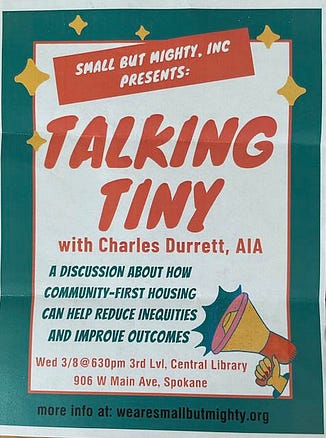What will it take to get more people housed and on their way to a stable life?
Some homelessness—and the miseries of being homeless—have been and may always be with us as a society, a city, and as a nation. The task before us is to make homelessness uncommon. The methods are twofold: diminish the many factors that render people homeless and, at the same time, build out paths that the homeless can use to rejoin housed society.
Each individual’s homelessness comes with a unique—and often complex—story, a story that may (or may not) involve a sudden rise in rent, loss of a job, spousal abuse, loss of familial support, physical illness, physical disability (sometimes combined with drug use for control of pain), and, yes, mental illness, and drug addiction. The further one has fallen the harder it is claw one’s way back. Homelessness runs along a spectrum from couch-surfing with what may be a diminishing circle of friends, to living in one’s car or ancient RV or a tent, to living on the street, the situation in which only the most visible homeless people find themselves. Somewhere along this spectrum life is reduced to finding food, basic shelter from the elements, basic physical safety with some control over one’s remaining belongings, and a place to relieve oneself.
One of my recurring nightmares is that I wake up on the street in a doorway in a part of the city with which I’m unfamiliar. I’m stripped of identification, no cell phone, no credit card, no mailing address I can access, no access to the internet, a desperate need to relieve myself, and only a few dollars in my pocket to use for food or transportation—but I don’t know where I should go. Passersby look at me with a tone of judgement, as if to say, “You must have made ‘bad choices’ to find yourself here.” Ringing in my ears is Mayor Woodward’s infamous, “I think we need to get to the point where we’re working to make homelessness less comfortable and get people connected to services.” In this nightmare it is hard to imagine being less comfortable and more hopeless.
As Camp Hope demonstrated, just having a place to be where one can be contacted, where there is some basic sense of community and a reasonable expectation that one’s belongings won’t be summarily pitched into a dumpster, offers a start on the climb back into housing, work, and society. (Of course, this all was notwithstanding Mayor Woodward’s, Sheriff Knezovich’s, and Chief Meidl’s unhelpful threats to “clear the camp”, refusing to provide electricity, and trying to prevent neighbors from providing water).
Camp Hope is gradually shrinking as people are helped to find shelter and services through the efforts of dedicated people and organizations, and homelessness is, for now, less and less in the news. Without multi-pronged and continued efforts, though, the issue will rise again in the heat of summer or the cold of next fall. There is some light. From an article by Shawn Vestal:
The best path forward on that overall problem is also the hardest path forward: Unify the regional response to homelessness and eliminate the forking paths.
The effort by a trio of former Condon administration officials – Gavin Cooley, Rick Romero and Theresa Sanders – to pull local governments together and initiate a 90-day process to investigate and design a potential regional homelessness authority is the brightest hope our region has for truly addressing this crisis.
Those officials are still trying to secure agreement among government leaders, which is no easy task, and if they do, there is an even more daunting challenge ahead to bring together the many parties – including the many service providers and the existing bureaucracies.
There is (and should be) a unifying theme: to provide a place to be and the very basic necessities of life, shelter and some sense of safety and community, that is, “Housing First”, is the way forward, clearly the best way to help people access help that can lead to a stable life.
As Shawn Vestal outlined in the above quote there is a welcome movement at the level of administration to address the issue of homelessness, but there are also a number of examples of “Housing First” rising up in Spokane and the surrounding area (and nationwide) that deserve evaluation, study, and support. The work of architect Charles Durrett is the common thread through several local groups working to provide basic housing and community through co-housing “tiny homes”—a concept on which Mr. Durrett has worked all over the nation.
Mr. Durrett is a principle in the architectural firm “The Cohousing Company” based in Nevada City, California. He has been instrumental in bringing the concept of cohousing from Europe to the United States. He knows Spokane well. He was the architect behind the very successful Haystack Heights Cohousing Community on Spokane’s lower South Hill. In the last several months Mr. Durette has visited Spokane, Colbert, and Colville to offer his vision of tiny home cohousing communities as part of the solution for the housing crisis.
This next Wednesday, March 8, on the third level of the downtown Spokane library at 6:30PM Charles Durrett will present “Talking Tiny”, providing attendees with the details of and background for the cohousing concept. I urge you to attend with me. Mr. Durrett will give his talk with the support of a newly formed non-profit, Small But Mighty, that is intent on bringing tiny home cohousing to Spokane. Here’s the flyer. RSVP by clicking here. (The website is a work-in-progress.)

Keep to the high ground,
Jerry